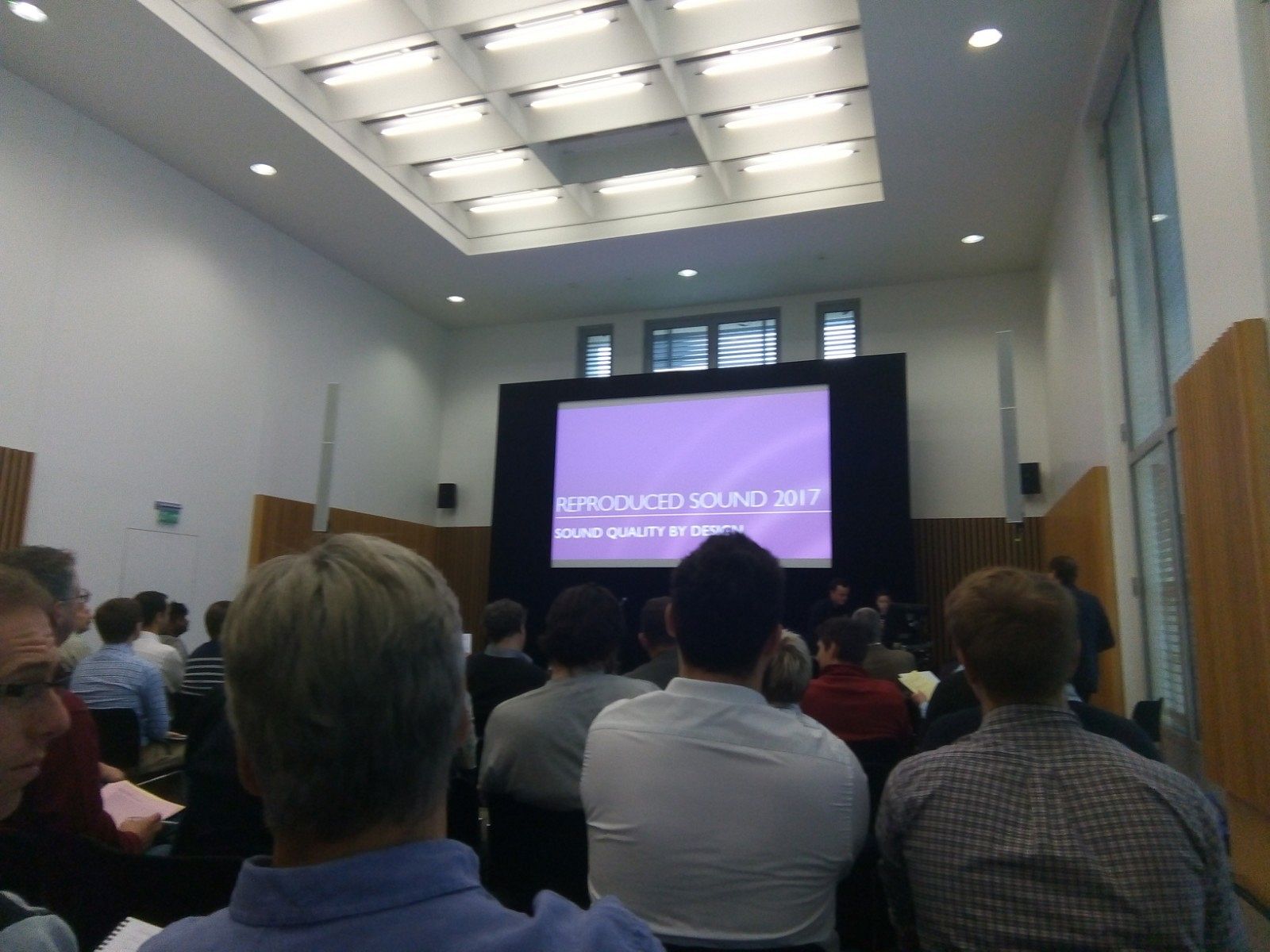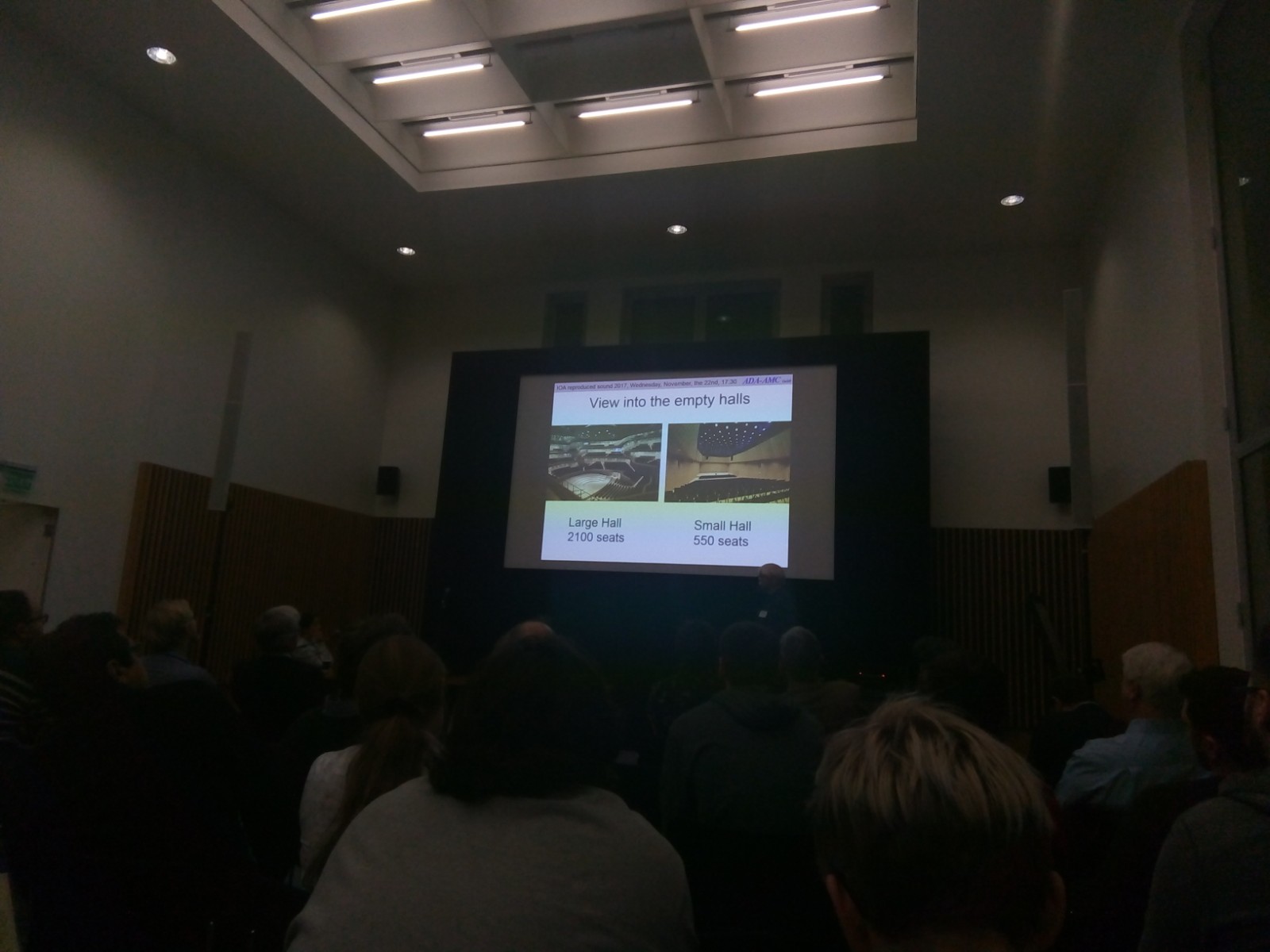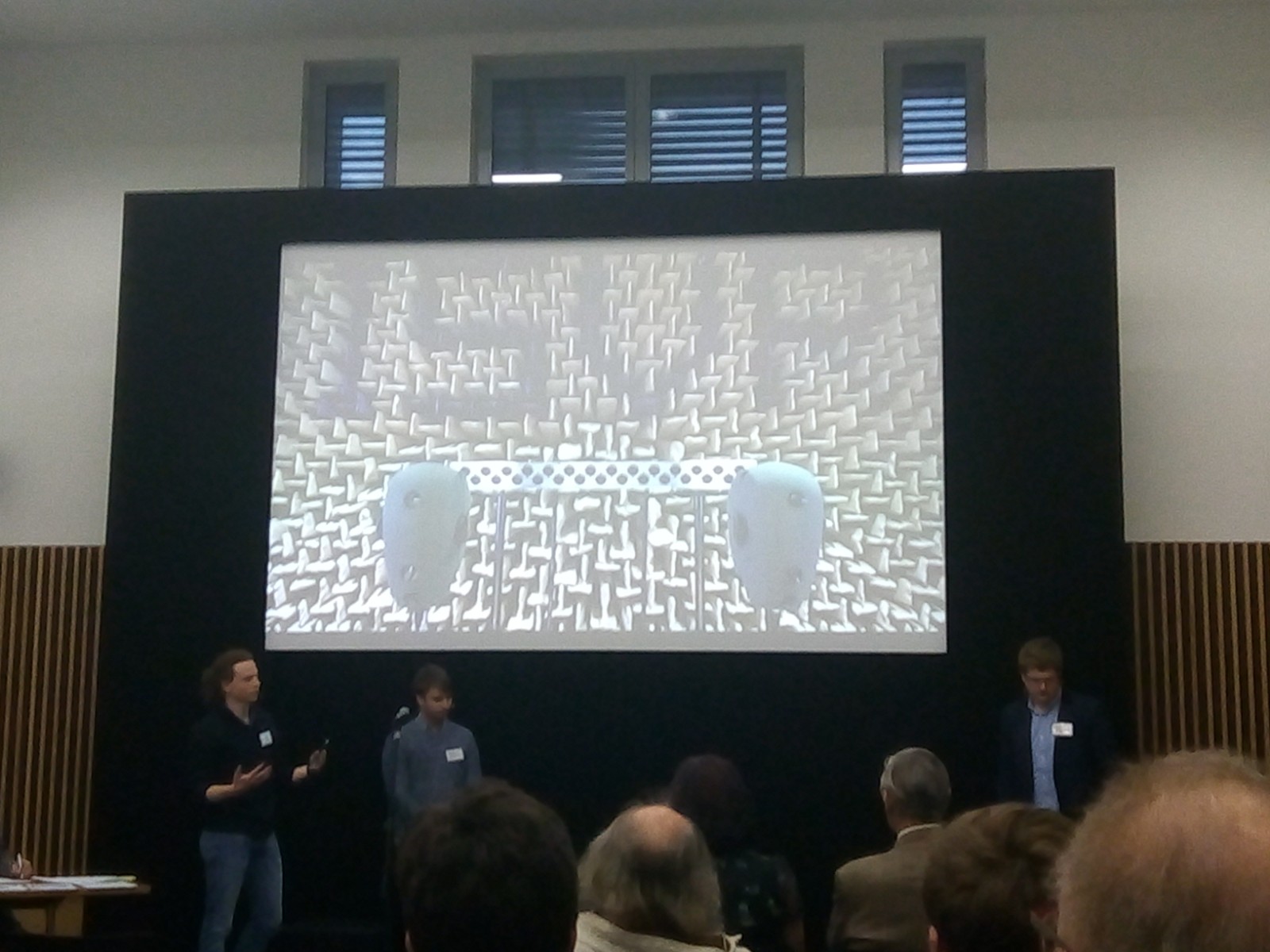News
Institute of Acoustics Reproduced Sound 2017 Conference Recap

DAY 1
The conference began with the Peter Barnet Memorial Award which was given to Floyd E. Toole. Sadly Floyd was unable to attend but it was clear that he is held in very high esteem by all present and his presence was missed. His presentation was given by Glenn Leembruggen. The presentation was about loudspeaker design and about the pitfalls in loudspeaker judgement, and about how under assessment some of the more expensive speakers available perform significantly worse than their cheaper counterparts.
Intelligibility and Sound Reinforcement
This section of the conference contained two very informative presentations about acoustic modelling of large spaces, discussing how accurate modelling in large spaces at high frequencies is time consuming and computationally demanding. There included some innovative techniques for speeding up this process.
The next presentation left all delegates in no doubt that speech intelligibility is impossible to assess by computational means, giving many examples of how current methods fail. A good case was made for incorporating hard of hearing viewers into intelligibility research. However there appears to be some hope in object based broadcasting and that hard of hearing viewers will one day simply be able to mix TV sound for themselves.
This section culminated with a fascinating presentation about active noise control in event noise management. In the densely populated nation of Belgium experiments have been conducted with large subwoofer arrays which use phase cancellation to reduce sound levels at nearby dwellings. A microphone which was positioned between the concert location and nearby dwellings consistently calibrated the phase cancellation required from the subwoofer array and some good results were shown. It made one wonder about what further applications such technology can have beyond pop concerts…
Cinema Sound
This section included two presentations about exciting new innovations in theatre sound – the first of which was a development from audio description in theatres - why not make a soundtrack to a live theatre show? These enhanced the viewing experience for sighted listeners and made the experience a lot more inclusive for the blind, as well as being cheaper than having a live audio describer.
The second presentation was about the theatre show “The Encounter” which has been running on Broadway for two years. For this show each audience member is given a pair of wired headphones in order to listen to the actor speak into a binaural head dummy onstage. This seemed to work well in the context of the theatre show which is about a man going about in the Amazon Rainforest. The need for wired headphones was very aptly demonstrated when the attempt to broadcast the binaural signal to the delegates’ smartphones encountered significant problems.
The next two presentations in this section described the infinite number of difficulties in calibrating speakers for cinema sound, it seemed that we are a long way off being able to create a calibration method that would work for all cinemas.
Room Acoustics
A presentation showed that acoustic modelling can keep up with acoustic measurement provided that accurate enough data is known about the materials of the room. Another presentation was about two concert halls in Germany, the Hamburg Elb-Philharmonic Hall and the Kulturpalast Concert Hall in Dresden. We learned about the “Hocus Pocus” of the wall surfaces, and other acoustic considerations of these new venues.

DAY 2
Arrays and Modelling
This section consisted of two presentations about Trans-aural Sound (by which binaural sound is replicated by a line speaker array), and about how technological innovations are working to solve the many challenges this technology provides.
Measurement
The first measurement presentation discussed mixing sound in very large spaces. This included a discussion of the historical reason why the “target” eq of a system is not flat, and why we should attempt to mix only direct sound, and in doing so we will correctly control the reverberation. Current methods of mixing were discussed which involve analysing signal picked up from a microphone inside the venue. It appears that the ears need not play any part at all the mixing of acoustic signals for live sound!
This was followed by a good argument as to why the Gaussian probability density function is not the correct distribution to use in audio signal processing – in most of the cases presented it was found that the Laplace probability density function was a better distribution to use. It was explained that historically the Gaussian distribution would have been used because of the ease of generating a Gaussian signal using analogue equipment.
New research into removing wind noise from audio recordings by signal processing was presented. The presentation was thought provoking and though the research is ongoing, it could pave the way for ideal wind noise reduction in audio recordings. At present it could be very useful for film and television however environmental noise measurements could prove a lot more problematic. Unfortunately there were no audio examples to listen to.
We were shown a speech conformer that could make speech more intelligible in real time. This involved taking speech audio and conforming it to a target spectrum – particularly useful for scenarios such as announcements on train station platforms. It was shown that different target spectra for men and women was important because the spectra designed for men and women were different and actually had a negative impact on intelligibility if applied the wrong way round. In the examples quite stereotypical male and female voices were used, indicating there could be issues for people with voices that didn’t conform to this.
ISVR Research
An electronic ear trumpet. Since the advent of the hearing aid the use of hearing trumpets has declined significantly, however this presentation investigated the idea of an electronic hearing trumpet. It was suggested that this could be useful in certain scenarios, particularly hospitals where people may not wear their hearing aids all the time. While I noted that a simple device consisting of a shotgun microphone and amplifier would solve this issue, this project set more ambitious parameters; that the device should be a simple hand held device no bigger than a telephone and compacted into one unit. Significant problems were caused by comb filtering and sound insulation however this research could lead to interesting new technology.
The other two ISVR presentations showed further research into trans-audio, for the cases of off axis listeners and trans-aural audio in a car.

By Charlie Everett